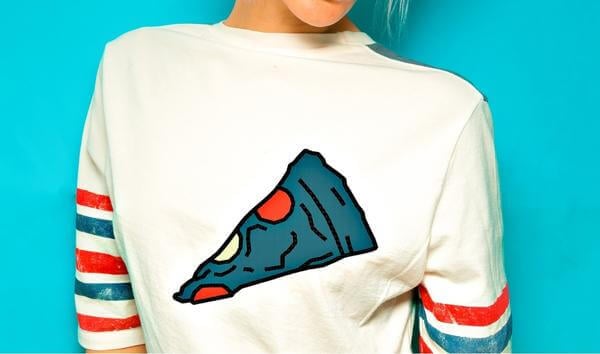PROTECTING ORIGINAL ARTWORK
 In this day and age, it’s more and more difficult to protect intellectual property, especially images and custom designs. Appropriation art, or art that copies someone else’s work and makes small changes to it, has been the subject of recent copyright infringement lawsuits. So how can you protect your work? The key is understanding intellectual property and copyrights.
In this day and age, it’s more and more difficult to protect intellectual property, especially images and custom designs. Appropriation art, or art that copies someone else’s work and makes small changes to it, has been the subject of recent copyright infringement lawsuits. So how can you protect your work? The key is understanding intellectual property and copyrights.WHAT IS INTELLECTUAL PROPERTY?
Intellectual property is a legal term and can be a work or invention that is the result of creativity, such as a manuscript or design, to which one has rights for which one may apply for a patent, copyright, trademark etc. When you create an original design for a t-shirt or sweatshirt, you’re creating intellectual property which you own. And while you don’t have to register for a copyright, it may help in the long run if you do.
As seen on The Today Show, in May 2014 Melissa Lay opened a clothing company called SandiLake Clothing, selling screen-printed T-shirts for children and adults. Lay created a one-of-a-kind black tank top and featured it on her Etsy site and in social media. Then in May 2015, she started getting text messages from friends showing her one sold at Target that looked awfully familiar.
Lay contacted Target, and the company recommended she file a formal complaint. Lay instead took to her case to social media which brought national attention to the situation. Lay, who had not copyrighted her work, realized it would cost thousands of dollars to fight the matter. Eventually, Target did the right thing and pulled the shirts from its stores.
More recently, the band Nirvana sued the designer label Marc Jacobs, claiming copyright infringement. The band says that a Marc Jacobs T-shirt featuring a yellow smiley face with “Heaven” written above it copies a design that the late Kurt Cobain created in 1991—a yellow smiley face with “Nirvana” written above it.
However, Nirvana had copyrighted the image, and a judge denied Marc Jacobs’ motion to dismiss the band’s complaint. He stated that the only difference was “the use of the letters M and J as eyes instead of two X’s,” according to CNN.
PROTECTING YOUR ORIGINAL ARTWORK
The easiest and best way to avoid copyright infringement is to create your own original images. As soon as you print something, it is considered copyrighted. All original artwork (intellectual property) is protected under copyright law.
However, if your business depends on a particular original image, if you are selling your products nationally, or if you expect your work to go viral, it might be a good idea to protect it. There are numerous websites that can walk you through the process including www.copyright.gov which is the official website for the U.S. Copyright Office. As of February 2020, it’s a flat $45 fee for single registration.
COPYRIGHTED WORKS
Let’s say that your creation may be inspired by someone’s design. How do you know if it’s okay to use it? You first have to look at the copyright situation, and then look at something called “Fair Use”.
Current law says that any work published after January 1, 1978, is automatically copyrighted from the time of creation to 70 years after the artist’s death. Anything published before that date had to be registered with the Copyright Office. That means:
- Anything published before January 1, 1923, is in the public domain
- Anything created between 1923-1977 that doesn’t have a copyright notice is in the public domain
- Everything published between 1923-1977 with copyright that wasn’t renewed is free for use
Any designs with short phrases (beach life, dog mom, vacay mode, etc.), geometric figures, familiar symbols, or everything that has become commonplace is not protected by copyright law.
FAIR USE
Fair use is outlined in the U.S. copyright act and allows for the use of copyrighted materials without the owner’s permission. This gives other parties the ability to make changes to the original work as long as the original owner is still able to “control and benefit from their works.” ProfileTree outlines four considerations for using someone else’s work:
- The purpose of use: non-commercial, editorial, parody and educational use are all covered under the law, but commercial use isn’t as clear.
- The nature of the copyrighted work: is the original work part of the public domain? A good example is the Mona Lisa—it’s considered public domain because Leonardo da Vinci died more than 70 years ago
- The amount of the original work used: the less, the better.
- The market effect: you can be sued if your product deprives the copyright owner of income.
AVOIDING COPYRIGHT INFRINGEMENT
Any image, as soon as it is published, is copyrighted. So, what does that mean for your screen-printing business? First, if it’s your original artwork, you might consider registering it so you own the copyright. Second, if it’s someone else’s work, is it protected by copyright? Basically, you can’t just pull an image from the internet and print it on your clothing without careful thought.
Lastly, sometimes your customers may bring you an image that they want printed. It’s your responsibility to make sure that both you and your customer have the rights to use that image. You may have to educate your customer on why you can’t just print that team name, mascot or logo on a tee. For example, Ohio State University has sued several screen printers for printing tee designs that they felt infringed on their copyrights.
Finally, we should note that none of the information above should take the place of real legal advice. If you have questions about copyrighting your artwork, contact your lawyer.